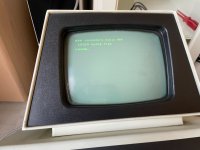Hugo Holden
Veteran Member
Interesting, I had not seen that PET diagnostic clip before. One feature of it I like (or at least the original version) is that it clips onto the CPU with a logic clip, so there are no wear issues on the CPU socket.Till now i checked traces from pin to pin. Checked some IC's with retro chiptester.
I am also building a tester for the PET(PET-Diagnostic-Clip) . Waiting for some parts.
The CPU and other sockets, especially the original PET ones which were single wipe, are very unforgiving if a larger than normal sized pin is fitted. They lose spring tension easily and later then are a loose fit for the IC. Though there is one advantage, in that their design allows the plastic shroud to be lifted off from the top, much like the horrible TI sockets that grip the pins side to side. This means the pins can then be removed one by one prior to solder sucking the holes and this puts minimal forces on the holes, pads & tracks.
Machine pin sockets are easily damaged too. For my vintage computers I always re-fit dual wipe sockets, as they are more forgiving and I lubricate them too with mx-3. One advantage of the dual wipe with the thin flat pins, they are much easier to solder suck and remove than a machined pin type. Also their pins (claws ) can be extracted from the top one by one if required. After solder sucking the pin is easily released in the hole with sideways movement to free them all before the socket is lifted free.
The machine pin type, that cannot be done easily and the pin occupies a greater cross sectional area of the hole and even with good solder sucking they can stick to the sides of the plated through hole and there are more risks to the pcb removing the socket than with the dual wipe type.


